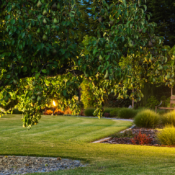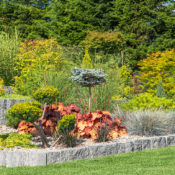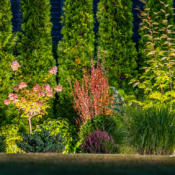The Seattle Homeowner’s Guide to Sustainable Landscaping

The Seattle Homeowner’s Guide to Sustainable Landscaping
In the bustling heart of the Pacific Northwest lies Seattle, a city known for its majestic mountains, shimmering waters, and – let’s admit it – quite a bit of rain. For homeowners in Seattle, this unique blend of natural beauty and distinct climate presents an opportunity: sustainable landscaping. When designed with intention and care, a yard can be both stunning and environmentally friendly, reflecting the very essence of the Pacific Northwest.
Introduction: The importance of sustainable landscaping in the Pacific Northwest climate.
Seattle’s climate, characterized by its mild, wet winters and warm, dry summers, is both a boon and challenge for gardeners. Traditional landscaping often demands extensive watering, chemical fertilizers, and regular maintenance. On the flip side, sustainable landscaping works with the local environment instead of against it, minimizing environmental impact while maximizing beauty and function.
Benefits of Native Plants: Reducing Water Use, Supporting Local Wildlife, and Resistance to Pests.
Introducing native plants to your landscape is akin to inviting an old friend home. These plants have evolved over millennia to thrive in Seattle’s unique conditions. They demand less water, reducing the strain on local resources, especially during the drier months. But the benefits don’t stop at water conservation.
By integrating native plants, homeowners support local wildlife, from the humblest pollinators to the majestic birds of the Pacific Northwest. These plants provide essential habitats and food sources that exotic plants might not offer. Moreover, having coexisted with local pests for centuries, native plants generally have robust defenses, reducing the need for harmful pesticides.
The Role of Efficient Irrigation: Technologies like Drip Irrigation and Smart Sprinkler Systems.
Even with water-wise plants, efficient irrigation is paramount. With technologies like drip irrigation, water is delivered directly to plant roots, minimizing wastage and ensuring deep, effective watering. For those looking to blend technology with their green thumb, smart sprinkler systems can be programmed or even use real-time weather data to adjust watering schedules. Such innovations ensure your garden gets the hydration it needs without excess – a true hallmark of sustainability.
Rain Gardens: Harnessing Seattle’s Frequent Rains in a Beautiful and Ecological Way.
Given Seattle’s reputation for rain, it seems only fitting to have a landscaping feature that celebrates it. Enter rain gardens. These are designed depressions in a landscape that collects runoff, allowing it to slowly infiltrate the ground. Planted with water-loving native species, rain gardens are a testament to both beauty and function. They reduce the load on stormwater systems, filter out pollutants, and create a dynamic focal point in a landscape.
Conclusion: Emphasizing the Long-term Savings and Ecological Benefits of Sustainable Landscaping.
Sustainable landscaping, at its heart, is about harmony – with nature, with local ecosystems, and with the future. While setting up such a landscape might seem daunting or even costly initially, the long-term savings are significant. Reduced water bills, decreased dependency on chemicals, and the joy of a thriving, low-maintenance garden are just the tip of the iceberg.
In the evergreen city of Seattle, where nature and urban life intertwine so effortlessly, sustainable landscaping is more than just a trend. It’s a nod to the past, a commitment to the present, and a gift to the future.




